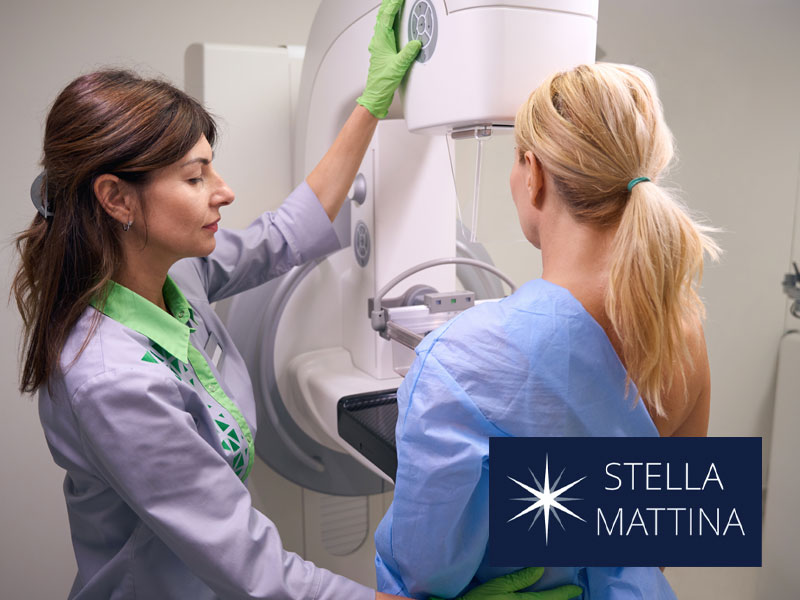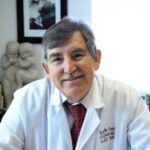
Mammogram screening is still one of the most important tools for detecting breast cancer early – and in 2025, knowing what to expect can make the process less stressful for you.
If you’re feeling nervous, you’re not alone. But our checklist will help you prepare – and get the most from your appointment. You’ll then feel confident afterwards that you’ve taken care of your health this year.
So, as October is Breast Cancer Awareness Month, why not get an appointment scheduled now and follow along with our checklist?
We’ll start with understanding today’s guidelines and then show you how to prepare on the day. Read on if you want to feel supported every step of the way.
Understanding Mammogram Screening in 2025
We hope you’re remembering to check your breasts manually and visually each month! But a breast mammogram screening is a low-dose X-ray designed to spot breast changes you might not feel during a self-exam.
They can detect cancer well before you feel a lump in your breast or notice the skin puckering, for example.
Camara Johnson APRN, FNP-BC – who works with Dr. Safely at our Bedford and Arlington locations – explains their importance this way: “I always advise my patients to stay up to date on their annual breast screenings. This allows them to feel confident they’re taking an active role in protecting their health.”
The screening process is quick and there’s proof it reduces deaths from breast cancer by finding tumors at an earlier, more treatable stage.
In 2025, mammogram screening guidelines continue to recommend routine screening for women in certain age groups – with some differences depending on your health history.
Your provider will help interpret these guidelines for your personal situation. But the bottom line is the same: Mammograms save lives. Awareness is important!
Here’s a reminder of when you should access screening:
Mammogram Screening Age and Recommendations
One of the most frequent questions is: When should I start?
- The mammogram screening age for most women is typically in the early 40s, but some may begin earlier if they have a family history of breast cancer or other risk factors, such as certain genetic factors or dense breast tissue.
- Screening recommendations usually suggest repeating the test every one to two years, though your doctor may adjust your schedule.
If you’re unsure, ask your provider to explain what’s best for your age, history, and risk level. This is the safest path to good breast health.
Mammogram Screening Checklist
Here’s our checklist to help you prepare for your breast exam, feel comfortable on the day, and understand the results.
Preparing for Your Mammogram Screening
A little preparation goes a long way:
- Wear a two-piece outfit so you only remove your top.
- Remember to remove any jewelry, too.
- Skip deodorants, powders, or lotions under your arms or on your chest, as these can show up on the images.
- If you’ve had mammograms at another clinic, ask for those images to be sent to your new facility – or bring a copy yourself. Radiologists compare past and current images to see changes more clearly.
- Bring any relevant insurance information and your ID.
- Write down questions you want to ask ahead of time.
- Put your next appointment in your calendar before you leave the clinic. That way, you won’t forget when it’s due.
If you’re still searching for a location, many women simply type mammogram screening near me to find a trusted local clinic. Convenience matters. But so does finding a provider you feel comfortable with. You can ask for recommendations from your friends.
What to Expect on the Day
- Check in at the front desk and confirm your information.
- Change into a gown provided by the clinic.
- Previous breast surgery, implants, or biopsies can affect images, so let your technologist know ahead of time.
- The radiologic technologist will position each breast on the X-ray plate to spread out the tissue for a clearer view.
- Gentle compression is applied for a few seconds to get a clear image.
- They repeat the process for both breasts, from a couple of angles.
- If you have dense breast tissue, you may have a 3D mammogram (tomosynthesis) to help avoid false positives.
The test itself only takes about 20 minutes. Some women describe mild discomfort, but most say it is brief and manageable.
Remind yourself that this short procedure provides powerful information for your long-term health!
After Your Mammogram Screening: Understanding the Results
Once your mammogram is complete, you’ll receive results within days to a couple of weeks, depending on the clinic. But what might your results say?
- A normal result means no concerning changes were found.
- If something unusual is present, you may be asked to return for more images or tests.
- Don’t jump to the conclusion that recall always means cancer! In many cases, follow-ups simply clarify unclear spots on the mammogram. For example, dense tissue and tumors may both appear white, which makes detection hard.
If you’re unsure about what exactly your results mean, don’t hesitate to ask your provider to explain in plain language. Your peace of mind is important.
One thing to remember is this: Finding anything abnormal early means much greater success in treatment.
Stella Mattina Offers Mammogram Screening at a Location Near You
You can ask for a same-day appointment at our locations all year round, not just in October, to discuss having a breast screening. We accept a broad range of health insurance to make this event as easy as possible for you.
All our staff are skilled in making you feel comfortable for this breast exam – even when stripped of your top clothing and feeling vulnerable. We understand how women can feel about this, because we specialize in women’s healthcare.
Take charge of your breast health today and book an appointment.

Dr. Gonzalo Venegas
Gonzalo Venegas, MD is the Medical Director of Stella Mattina Health and a respected obstetrician-gynecologist with over four decades of service in the Dallas medical community. He has led the Department of Obstetrics and Gynecology at Methodist Dallas Medical Center and contributed to community health through his role on the Parkland Health & Hospital System Board. A dedicated mentor at UT Southwestern, Dr. Venegas is known for his leadership, compassion, and commitment to advancing women’s health and medical education.